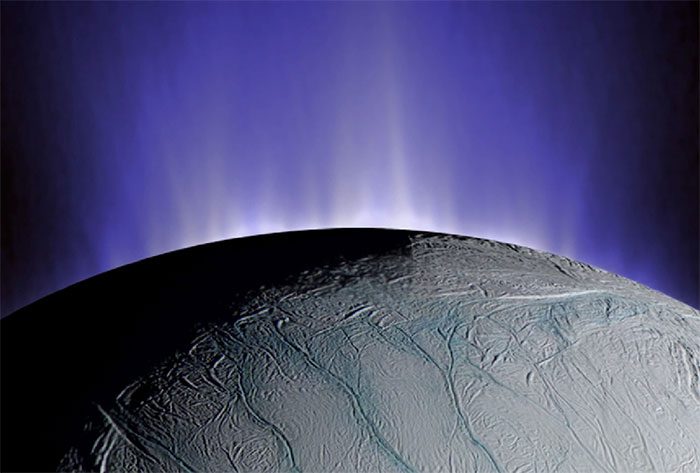Scientists have discovered a place that may contain evidence of extraterrestrial life that human spacecraft can easily capture.
According to SciTech Daily, a study led by the University of Washington (USA) and Freie Universität Berlin (Germany) has indicated that ice particles ejected from Europa or Enceladus may harbor evidence of extraterrestrial life that NASA has long sought.
Europa is a moon of Jupiter, while Enceladus is a moon of Saturn.

Material ejected from the surface of Enceladus may contain traces of life – (Graphic: NASA).
Underneath the icy crust of these frozen moons is a subsurface ocean, where planetary scientists believe life may be hidden.
However, searching for life beneath this ice crust is a significant challenge. NASA plans to launch the Europa Clipper mission to Europa in October 2024 and is testing a robotic snake designed for Enceladus.
The new findings suggest that the Europa Clipper may have a high chance of success with the ice particles.
According to the study published in the journal Science Advances, hydrothermal activity at the bottom of the subsurface ocean of these two moons, as well as cracks in the ice crust, could generate enough momentum to propel material into space.
This outflowing material is likely to contain live cells that mass spectrometers—equipments used in many NASA missions, including Europa Clipper—can identify.
The researchers demonstrated this through simulation models, mimicking how icy material escapes from the oceans of Europa and Enceladus, traveling at speeds of 4-6 km/s in space and colliding with observation instruments.
Mass spectrometers have successfully identified key signatures, particularly with a powerful mass spectrometer like the SUrface Dust Analyzer on the Europa Clipper, which can detect a single cellular material among hundreds of thousands of ice particles.
Scientists believe that even a living bacterium could stand a chance of being discovered.
This could be a Sphingopyxis alaskensis or one of its relatives, or a similarly sized species. This is an extremely small bacterium found in the state of Alaska, with a body that can fit inside an ice particle.
This discovery could serve as a guide for NASA and other space agencies to program their spacecraft for upcoming missions in the search for life.


















































